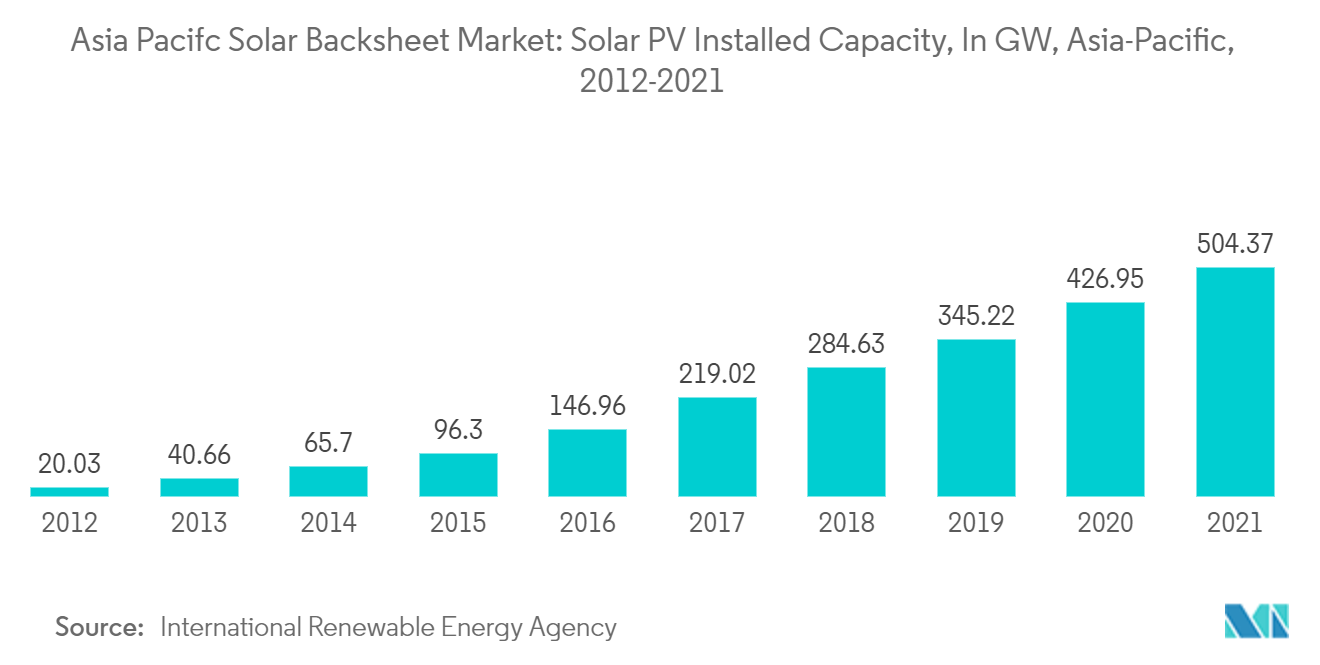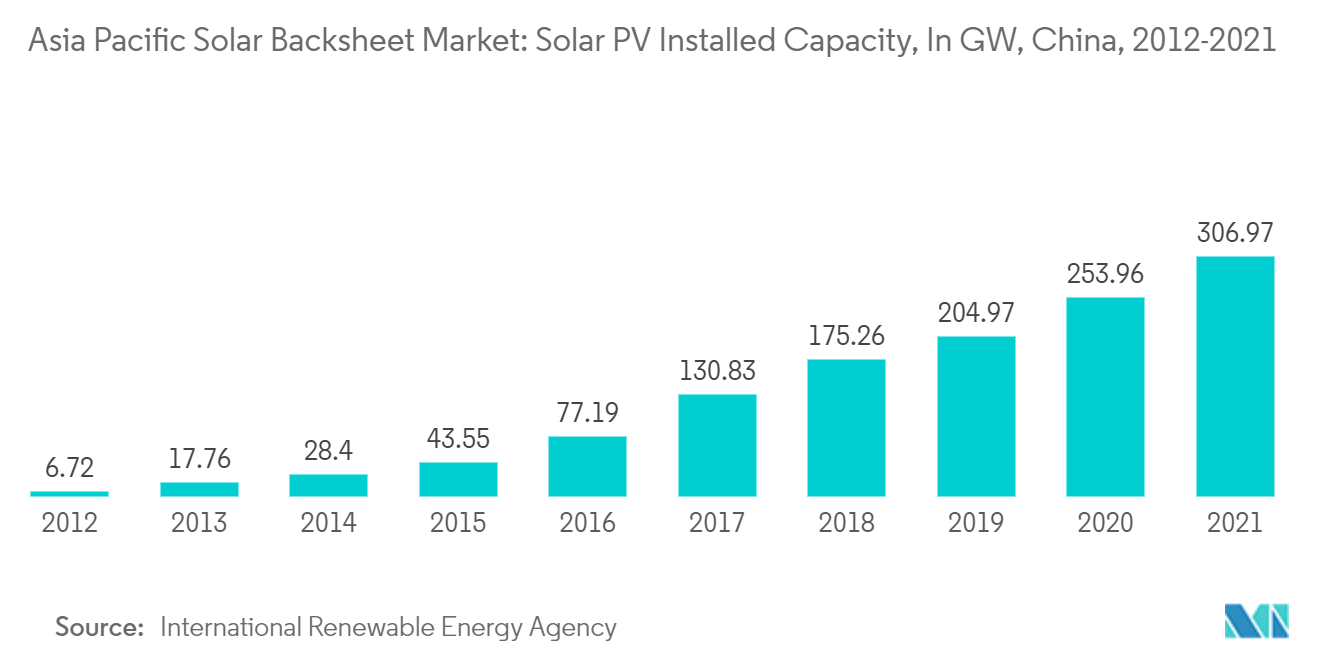Market Trends of Asia Pacific Solar Backsheet Industry
This section covers the major market trends shaping the APAC Solar Backsheet Market according to our research experts:
Fluoropolymer is Expected to Become a Significant Segment
- Fluoropolymer solar backsheet consists of three layers, i.e., inner, middle, and outer layer, which is attached to the outermost layer of a solar panel. The inner and outer layer of the solar backsheet is primarily made of polyvinyl fluoride (PVF) or polyvinylidene fluoride (PVDF). In contrast, the middle layer consists of polyethylene terephthalate (PET or polyester).
- In 2021, fluoropolymer backsheet had a majority of the market share. The fluoropolymer backsheet is costlier than non-fluoropolymer due to its additional safety features like proven hydrolytic stability and excellent resistance to weathering effects in various conditions with PVF or PVDF layer.
- South Korea is committed to surging the share of renewable energy sources in the electricity supply, gradually phasing out coal and nuclear power from the energy mix. In December 2020, South Korea introduced its Ninth Basic Plan for Long-Term Electricity Demand and Supply 2020-2034 to increase the share of renewable energy in its energy mix from 15.1% in 2020 to 42% by 2034. Solar PV is expected to play a vital role in reducing dependency on fuel imports for thermal power generation, thus supporting the solar energy market in the coming years, thus creating an increasing demand for fluoropolymer backsheet.
- In Australia, the solar energy market is expected to grow significantly owing to the country's increasing renewable investments and supportive state-level policies. For instance, the Electricity Infrastructure Roadmap of New South Wales (NSW) aims to construct 12 GW of new renewable projects, which include large-scale solar generations, attracting AUD 32 billion in private investment by 2030. Similarly, Australia's Northern Territory continued to progress toward its target of 50% renewable energy by 2030.
- Asia-Pacific is expected to be the most important region, mainly due to high economic growth and increasing solar energy production every year. The solar energy installed capacity in the region increased to 505.290 GW in 2021 from 427.850 GW in 2020. This growth is expected to be a significant for Solar backsheet market. Furthermore, Asia-Pacific has been at the forefront of installations and capacities mainly due to government policies and incentives. For instance, India targets to install 40 GW of rooftop solar by the end of 2024. Therefore, the government of India rolled out subsidies of up to 40% for residential rooftop installations. This is expected to be a major driver for the market in the coming years.
- Hence, with additional benefits than non-fluoropolymer, the segment is likely to have high adoption in solar energy projects. Furthermore, mass production is expected to reduce prices and boost the segment during the forecast period.

China to Dominate the Market
- China is estimated to be the major country in the region, with approximately 307 GW of solar PV installations in 2021. It is expected to double its installation capacity by 2025, which may boost the backsheet market during the forecast period.
- Furthermore, China, the world's second-largest economy, is focusing on increasing the penetration of solar PV generation by encouraging residential and commercial end users to install rooftops solar PV. In August 2021, the National Energy Administration (NEA) approved a pilot program to push the deployment of rooftop solar PV installations in the country. Accordingly, by 2023, the existing residential or commercial buildings will be required to install a rooftop solar PV system, further aiding the growth of the market.
- Moreover, the solar PV installation cost in the residential and commercial sectors are also declining over the past decade. For instance, according to the International Renewable Energy Agency (IRENA), in 2020, the residential and commercial solar PV installations cost in China reached USD 746 per kW and USD 691 per kW from USD 2,856 per kW and USD 2,524 per kW in 2012.
- China is home to nearly all the largest solar photovoltaic (PV) panel and equipment manufacturing companies and facilities across the world, with nearly 70% of the global solar PV manufacturing capacity situated in the country. These companies also dominate other businesses in the solar energy supply chain, such as the manufacture of polysilicon, ingot, and wafers for panels and materials like fluoropolymer and non-fluoropolymer backsheets.
- In March 2022, China planned to build 450 gigawatts (GW) of renewable power generation capacity, which includes solar PV, in the Gobi and other desert regions. The president of China had pledged to bring China's total wind and solar capacity to at least 1,200 GW and reduce the carbon emission to a peak by 2030.
- Hence, due to the above factors, China is expected to remain the world's largest market for solar energy and equipment, such as panels. The demand for solar backsheets is expected to rise steadily during the forecast period.


